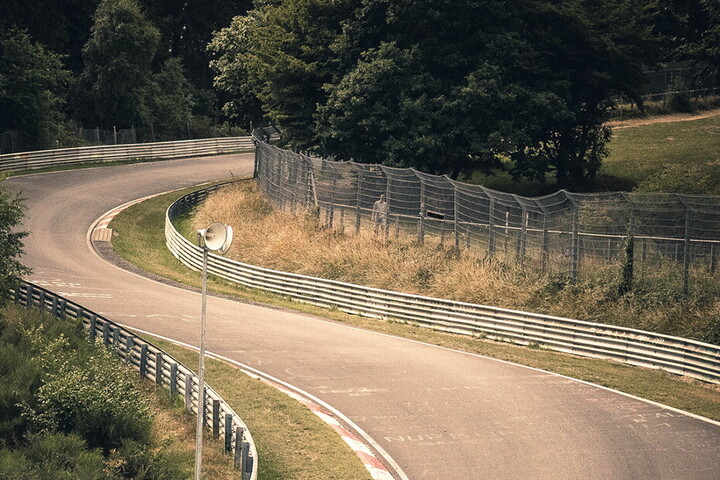They offer little comfort, have hardly any driving assistants, consume quite a lot of petrol - and are simply enchanting: cars from decades long gone. Whose eyes are not magically drawn to a Porsche 356, an Alfa Romeo Giulietta or a Jaguar E-Type, to name but a few of the automotive jewels of the 1960s. But also the sight of less extravagant models like the Fiat 500, the VW Beetle 1300 or the Citroën 2CV touch-es the beholder. For some, it triggers wistful childhood and youth memories, for oth-ers the longing for an epoch not experienced by themselves.
These cars are no longer seen as a means to an end to get from A to B quickly and dryly. Rather, they have been transformed into cultural assets whose ownership, use and care give their owners the greatest pleasure. Against this background, it is hard-ly surprising that the number of classic cars and youngtimers has been increasing worldwide for years. Classic cars are vehicles that were first registered at least 30 years ago and are in very good original condition. Experts define youngtimers as cars that are 20 years or older but have not yet reached the status of classic cars.

According to the AXA Classic Car Market Review 2019, the largest market for classic cars and youngtimers is the United States of America. There are an estimated 6.5 million collector's items there. It is followed by Europe with an estimated 4.8 million of these cars, divided into the main markets of Germany (approx. 1.5 million), France (approx. 1.1 million), Italy (approx. 1 million) and Spain (approx. 400,000). The other European countries contribute about 800,000 cars.
At the beginning of 2020, there were more than half a million registered classic cars in Germany for the first time, as the German Association of the Automotive Industry (VDA) recently announced. In concrete terms, this figure includes 525,968 passen-ger cars that are 30 years and older. This is eleven percent more than in the previ-ous year (474,516).
One man who is particularly pleased about the positive development of the interna-tional classic car scene is Professor Dr. Mario Theissen, Vice President of the Fédération Internationale des Véhicules Anciens (FIVA). The Turin-based world fed-eration of classic car clubs and associations represents the interests of around 1.5 million members. In addition, Mario Theissen is an honorary classics speaker and a member of the sports committee of the General German Automobile Club ADAC.
"Enthusiasts shaped the market for classic cars for many years," he looks back. "They maintained or restored their treasures mainly on their own initiative. But in the past ten years, more and more service offers have become established. As a result, the market has become accessible to more and more lovers of classic cars and youngtimers and has developed into a significant economic factor". In addition, the number of people who see classic cars as an opportunity to invest their money prof-itably has also increased.
In some European countries, there are now favorable framework conditions for clas-sic cars. In Germany, for example, they enjoy special regulations regarding vehicle tax and driving in low emission zones in connection with the H-plate. "Across coun-tries, there is also the fact that more and more car manufacturers and suppliers are becoming increasingly involved in the classic car sector", as Mario Theissen empha-sizes. Pirelli is no exception. The premium manufacturer has been the exclusive global tyre partner of FIVA since March 2017. In this function, the company supports the technical advisory service of the association in all tyre matters. Pirelli also pro-vides helpful information that is accessible to all on the FIVA website. Mario Theissen mentions the decisive criteria for the selection of the exclusive partners: "They must be involved with their products in the classic car scene, have a high reputation and be available to the worldwide FIVA members with their know-how as contact per-sons".
Which tyre-specific topics are classic car owners particularly interested in? The FIVA Vice President can also answer this question in detail: "First of all, there is the tyre characteristics. Due to the low annual mileage, vintage tyres are often replaced not because of wear and tear, but because of ageing. In these cases, it is therefore more a question of maintaining the adhesion properties than the wear resistance". Other issues are the correct tyre size or a tyre size corresponding to the original, availability in terms of quality and quantity, the correct storage of dismantled tyres and wheels and the correct treatment of tyres or wheels mounted on the vehicle, especially if they have not been used for a long time. "In addition, vintage car drivers are interested in tyres that use the latest technology, but at the same time harmo-nize with the chassis and do not overstrain it," Mario Theissen names another im-portant topic.
In this area Pirelli can score with the Pirelli Collezione. With this special portfolio, the Group is responding to the continuously increasing demand from the owners of pres-tigious classic cars and youngtimers for modern tyres in classic look. The special fea-ture of these new tyre developments: Their appearance and tread pattern are similar to the historic Pirelli originals, but in fact they are products of modern high technolo-gy. To develop them, Pirelli engineers work closely with their colleagues at the re-spective car manufacturers. This is how new developments of the Stelvio Corsa for the Ferrari 250 GTO, the Cinturato P5 for the Jaguar XJ220, the Cinturato CN36 for the Porsche 356, the Cinturato CA67 for the Lancia Flaminia, the Cinturato CN54 for the Fiat 500 and the P Zero for the Audi Quattro, among others, were created.
"This path taken by Pirelli and some car manufacturers is the best approach for high-performance cars and should be extended to other interested manufacturers," prais-es Mario Theissen. "In addition, the volume market requires technologically up-to-date tyres with classic profiles that are not optimized for specific vehicle types".
Mario Theissen is convinced that the number of registered classic cars and young-timers will continue to grow. "Currently, vehicles from the years 1989/1990 dominate the growth. That means mainly models that used to dominate the road scene are now partly becoming cult cars". Last but not least, the growing share of classic cars is based on the maxim "Preservation before replacement". This is sustainable and sets a counterpoint to the throwaway mentality.
Of course, the classic car scene is also feeling the effects of the COVID 19 pandem-ic. So far, none of the numerous events in Germany and other countries where those mobile jewellery can be admired has been able to take place. But what do classic car lovers do if they cannot present their favourites? "The buoyant trade in spare parts shows that many vehicles have been given special care, including restoration, during the unusual season," the VIFA Vice President knows from numerous discussions. "And as the national arm of the FIVA in Germany, we at ADAC Klassik have intensi-fied the contacts with our clubs". For example, with well-attended online seminars that offer assistance in dealing with the situation".
"Plans for 2021 are underway at all organisers", Mario Theissen looks ahead. "I hope for the organisers and participants that the course of the pandemic will allow trade fairs, concourses and classic car tours to take place again next year".
So that we can soon again succumb live to the beguiling charm of cult cars such as the Iso Isetta (called the bubble car), the Austin Healey 3000, the Mercedes Benz 250 Coupé W 114, the BMW CSi, the Alfa Romeo 2000 GTV Coupé, the Maserati Biturbo, the Volvo B 1800 18 ES and the Ferrari 348.




